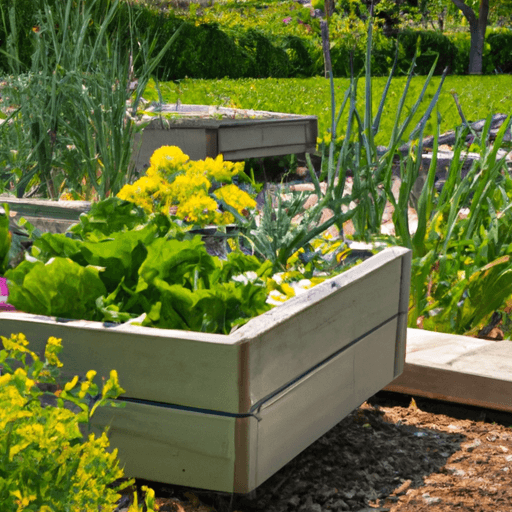Raised beds offer numerous benefits for gardening. They solve drainage and soil fertility issues, prevent soil compaction, and experience fewer weed problems compared to traditional ground-level gardening. They can be made from a variety of materials, including wood, stone, or cement. Common wood choices include cedar, hemlock, juniper, and redwood. Other options include concrete blocks, natural stone, brick, and recycled plastic boards.
The size and number of raised beds depend on individual needs and resources, but a standard size is 4 feet wide by 8 feet long.
Benefits of Raised Beds
Raised beds solve drainage and soil fertility issues, warm the soil more quickly in spring, prevent soil compaction, and minimize weed problems.
One of the key benefits of raised beds is their ability to improve soil fertility. By using raised beds, gardeners have more control over the quality of the soil. They can add organic matter, such as compost or well-rotted manure, to enrich the soil and provide essential nutrients for plants.
Additionally, raised beds allow for better water drainage, preventing waterlogging and root rot. Gardeners can also tailor the soil composition to suit the specific needs of different plants.
Materials for Raised Beds
Cedar, hemlock, juniper, and redwood are commonly chosen for the sides of the beds because they are rot-resistant and durable. These materials provide a sturdy framework for raised beds, ensuring their longevity and structural integrity.
However, there are also creative alternatives and budget-friendly options available for those who want to explore different materials. Concrete blocks, natural stone, and brick can be used to build raised beds, offering a more affordable option compared to wood. Recycled plastic boards are another environmentally friendly choice that provides durability and longevity.
Additionally, bales of hay or straw can be used as temporary sides for raised beds, offering a cost-effective solution that can be easily replaced each year. These alternatives allow for flexibility in design and construction while still providing the benefits of raised beds.
Wood for Raised Beds
Using rot-resistant wood is essential for the longevity and durability of the raised beds. When choosing the right wood for raised beds, cedar is a popular and reliable option. It is naturally resistant to rot and decay, making it ideal for outdoor use. Hemlock is another alternative that is less costly but still offers good durability. Juniper and redwood are also commonly used for raised beds due to their natural resistance to rot.
It is important to avoid pressure-treated wood, as it contains chemicals that can leach into the soil and potentially harm plants. However, if wood is not the preferred material, there are alternatives available. Concrete blocks, natural stone, brick, and recycled plastic boards can all be used to create raised beds. These materials provide durability and longevity, while also being resistant to rot.
Other Materials
Straw can be a temporary option for creating sides for raised beds, and it can easily be moved to a compost pile. It provides a quick and affordable solution for those who want to experiment with raised bed gardening.
Using bales of straw as the sides of the raised beds allows for easy installation and removal. Additionally, straw can be replaced with new bales each year, ensuring a fresh and clean setup.
On the other hand, recycled plastic boards offer several advantages. They are durable, long-lasting, and resistant to rot and decay. They also provide a more permanent solution compared to straw.
Recycled plastic boards are an environmentally friendly option, as they are made from recycled materials. They are easy to clean and maintain, making them a popular choice for raised bed construction.
Size and Number of Raised Beds
The ideal width for a raised bed is 3 to 4 feet, allowing for easy access from all sides. This is particularly important for crop rotation and accessible gardening.
By having a width that allows for easy reach, gardeners can easily move around the bed to tend to their plants and carry out necessary tasks such as weeding, pruning, and harvesting.
Additionally, a wider bed provides more space for different crops to be grown together, facilitating crop rotation. This technique helps prevent the buildup of pests and diseases in the soil, as different plants have different nutrient requirements and attract different pests.
Tips for Successful Gardening With Raised Beds
To ensure successful gardening with raised beds, gardeners should consider the size and number of beds that best suit their needs and budget. One of the most common mistakes is not maximizing the space available.
To make the most of the raised beds, it is important to carefully plan the layout and utilize every inch of space. One way to do this is by intercropping, which means growing different plants together that have different growth habits and harvesting times. This allows for efficient use of space and maximizes productivity.
Another common mistake is overcrowding the beds. It is important to give each plant enough room to grow and thrive. Proper spacing between plants ensures good air circulation and reduces the risk of diseases.







